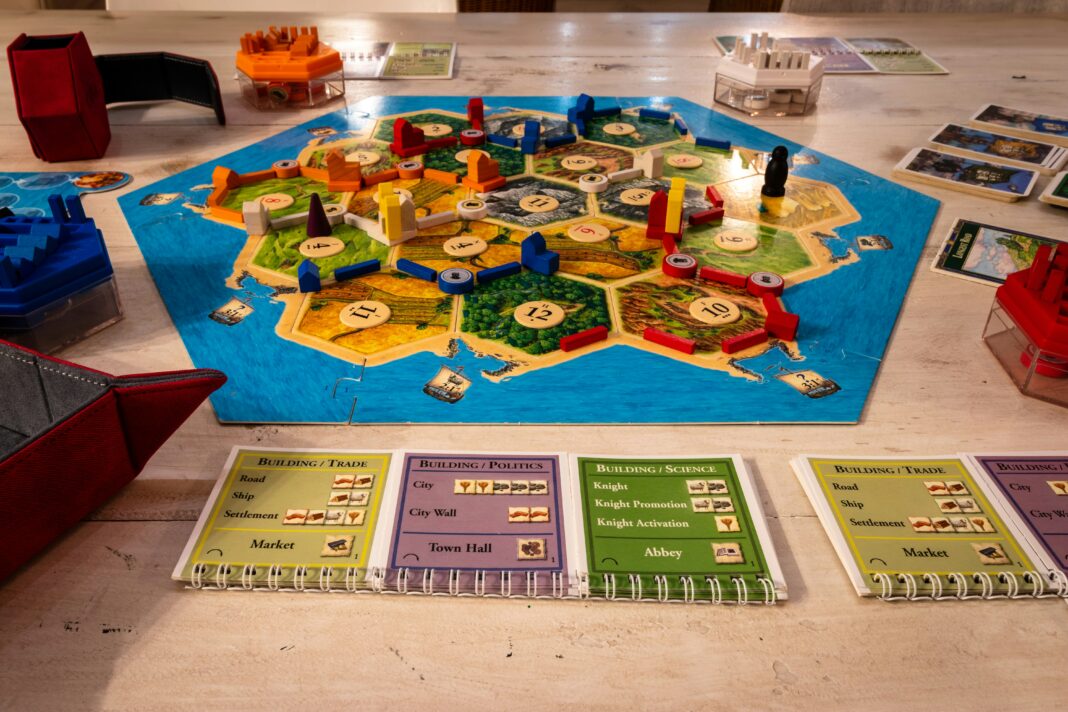Pakistan’s education system relies on traditional teaching methods, where students memorize textbooks to pass exams. This approach is common in schools across urban and rural areas, focusing on grades rather than building practical skills like problem-solving and teamwork. For Disaster Risk Reduction (DRR) education, which is vital in a country prone to floods, earthquakes, and other disasters, this method falls short. One effective way to integrate DRR into the curriculum is through interactive games and simulations.
These tools can help students to understand complex concepts, such as flood risk management and earthquake preparedness, engaging them in experimentation. By incorporating games into the learning process, educators can foster a culture of resilience and preparedness among students, ultimately contributing to a safer and more disaster-resilient community.
DRR requires practical, participatory skills and quick thinking, not just memorized facts. A new approach to DRR games is changing how students learn about disaster preparedness. These interactive games make learning engaging and memorable, offering a way to improve education across Pakistan.
By actively involving students in real-life scenarios through play, DRR games help them practice decision-making, teamwork, and problem-solving in a safe environment. This approach not only strengthens their knowledge but also builds confidence to respond effectively during actual disasters. In the long run, such experiential learning can bridge the gap between awareness and action, ensuring that disaster preparedness becomes a practical skill rather than just theoretical knowledge.
The Limitations of Traditional Education
In most classrooms, the teaching method hasn’t changed much in decades. Teachers read from textbooks, write notes on blackboards, and students rush to copy them before the class ends. The goal is to finish the syllabus and prepare for exams, not to help students understand or apply what they learn. This happens in cities, towns, and villages, but rural schools face bigger challenges because they have fewer books, tools, or trained teachers. Students learn to memorize answers, not to ask questions, nor try new ideas, or take risks, as these are rarely rewarded in the current system.
For DRR education, this traditional style is a grave problem. Disasters like earthquakes, flooding, and landslides don’t wait for someone to recall a textbook chapter. DRR demands fast decisions, teamwork, and practical knowledge. Yet, DRR lessons in schools are often limited to a single talk, a poster-making contest, or an “awareness day” once a year.
Without regular practice, students forget what they learn, leaving them unprepared for real emergencies. This gap in education means many students lack the skills to stay safe or help others during a disaster, which is a critical issue in a country like Pakistan, where disasters are common.

The Power of DRR Games
DRR games are changing traditional teaching patterns by making lessons interactive and fun. Instead of sitting quietly listening, without asking questions, students become part of a pretend disaster scenario. They take on roles, such as community leaders or emergency planners, and face challenges with limited resources.
For example, in one game, students might need to prepare a village for a flood with a small budget. They decide whether to build flood walls, improve drainage, or teach people about safety. Each choice has consequences, and the game shows them what happens, helping them understand trade-offs in a safe, controlled way.
These games make DRR feel real. Students argue, plan, and work together, turning abstract ideas into experiences they can remember. Unlike lectures, games create a space where mistakes are allowed, so even shy students feel comfortable joining in. This collaborative environment not only improves communication and leadership skills but also nurtures empathy, as students learn to consider the needs of others while making decisions. By simulating real challenges, games prepare young people to think critically and act responsibly, qualities that are essential for building resilient communities in Pakistan.
Centre for Disaster Preparedness and Management, University of Peshawar, organised a DRR exhibition on 23rd February 2023. Students from various schools and university departments participated; hundreds of school children played DRR games in a single day. School Teachers often notice that school children who rarely speak in class become active and excited during these activities. By making learning feel like a team mission, DRR games help students care about what they’re learning and remember it longer.
Evidence of Impact of DRR Gaming
The Centre for Disaster Preparedness & Management (CDPM), University of Peshawar, has provided clear evidence on its LinkedIn and Facebook pages that DRR games improve children’s understanding of disasters and what they can do during emergency phases.
In schools and youth programs in Peshawar, where CDPM has introduced these activities, students show a marked improvement in their understanding of disaster preparedness. They can explain why early warning systems or safe evacuation routes are important, and they become more confident in identifying dangers such as unsafe buildings or flood-prone areas.
These sessions also sharpen teamwork and creativity. After playing a DRR game, students often suggest practical, community-specific ideas like new ways to warn residents about an approaching storm, ideas they likely wouldn’t have developed from lectures alone. In post-game discussions, they describe what they’ve learned in vivid, personal terms, unlike peers who have only attended one-way awareness talks.
One teacher from a school participating in CDPM’s program summed it up well: “In one hour, they learned what I’ve been trying to teach for months.” Even short game sessions leave a lasting impression. Students remember more, feel more prepared, and can better translate knowledge into action.
DRR games aren’t meant to replace traditional lessons but to add a hands-on dimension that makes learning stick. Embedding these games into the regular education curriculum across Pakistan, especially in remote areas, can bring a positive change in students’ understanding. CDPM brings a transition in students from simply memorizing facts to actively using their knowledge, a shift that’s essential for meeting real-world challenges.

Barriers to Accessing DRR Games
Adding DRR games-Despite their benefits, they are largely unavailable in educational institutions. Many schools, particularly in remote or low-income areas, have never used them due to logistical challenges and reliance on external organizations such as NGOs or universities.
As a result, these schools continue to use traditional methods, like lectures and textbooks, lacking the resources or knowledge to adopt new approaches. This leads to a disparity: students with access to DRR games develop practical emergency skills, while others receive only theoretical knowledge that is difficult to apply in real situations.
This disparity stems from unequal opportunities, not student abilities. Schools with DRR games can better prepare their students, while those without fall behind. Over time, this could create one group equipped to respond in crises and another left vulnerable due to a lack of practice. Notably, the most vulnerable are often in rural Pakistan, where disaster risk is higher.
To address this gap, schools require affordable game kits, trained teachers, and integration of DRR games into the regular curriculum. This approach ensures DRR games become a standard part of learning rather than relying on occasional external visits.
A Tool for Bigger Change
DRR games are more than just a way to teach about disasters; they provide opportunities to improve our teaching methods. Pakistan’s education system often encourages competition and memorization, whereas DRR games promote teamworking, thinking, questioning, and effective decision-making.
They allow students to practice defending their ideas and listening to others, skills that are useful in their future growth. By bringing energy to classrooms where learning is often quiet and individual, these games show students that learning can be active and exciting.
Adding DRR games to schools doesn’t mean rewriting the entire curriculum. They can easily fit into Social Studies, Geography, or Science subjects. Teachers can learn to use them in just a few hours of training. But, for a real change, schools need to experiment with these games regularly, not just once or twice a year. Consistent practice helps students develop habits of active learning, extending to other subjects, and helps create a more engaged school culture.
Recommendations for Wider Use
Government and education policy experts should collaborate with NGOs and universities to share resources and introduce DRR games in remote areas. Pilot programs can assess effectiveness in both urban and rural schools. These initiatives will help integrate DRR games into school curricula, enabling students across Pakistan to be better prepared and more confident.
Conclusion
DRR games equip students with essential skills for navigating disasters, fostering teamwork, and problem-solving abilities for life. Moving beyond traditional, book-based learning, DRR games offer a way to create a more engaged, resilient generation. It starts with one classroom, one game, and one group of students, working together to face a challenge that matters. Bring DRR games to your classroom and help empower the next generation today.
References:
- CDPM introduces serious games for DRR learning
Media Brief from CDPM highlighting their serious games for disaster education
https://www.facebook.com/CDPMP/posts/media-brief-centre-for-disaster-preparedness-and-management-23022024innovative-s/802359308601940/ Facebook - UNDRR – Stop Disasters! Game – Turning disaster prevention into a real-life challenge.
https://www.undrr.org/news/stop-disasters-game-turns-disaster-prevention-real-life-challenge - UNDRR – Children and Youth: Stop Disasters Game – Online simulation for disaster preparedness learning. https://www.undrr.org/children-and-youth/stop-disasters-game
- UNDRR – Riskland Game – School Safety Programme resource promoting DRR among children. https://www.undrr.org/about-undrr/where-we-work/incheon/schoolsafety
- Red Cross Red Crescent Climate Centre – Dissolving Disasters – Participatory role-playing game for climate risk education. https://www.climatecentre.org
- Serious Games for Evacuation Training – Unity3D-based prototype for building evacuation scenarios. https://arxiv.org/abs/1303.3828
- VR-based Earthquake Preparedness Game – Enhancing self-efficacy through immersive training. https://arxiv.org/abs/1905.11082
Note: This article was prepared in collaboration with Climate Forward Pakistan, cfpakistan.org
Similar Articles: Climate Education for Children through Storytelling and Fiction

Mohammad Shaheer Khan is a graduate in Disaster Management from the University of Peshawar and an active climate advocate. His work focuses on building community resilience. Beyond training, he designs and facilitates Disaster Risk Reduction (DRR) and sustainability-focused games that transform complex concepts into engaging, hands-on learning experiences for students and communities. Through workshops, simulations, and interactive tools, he aims to make preparedness education informative, memorable, and actionable.

